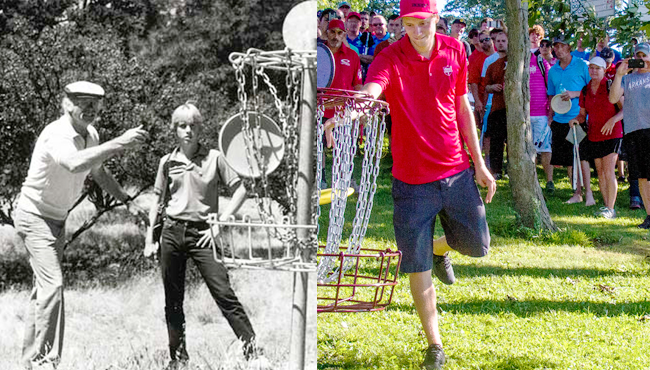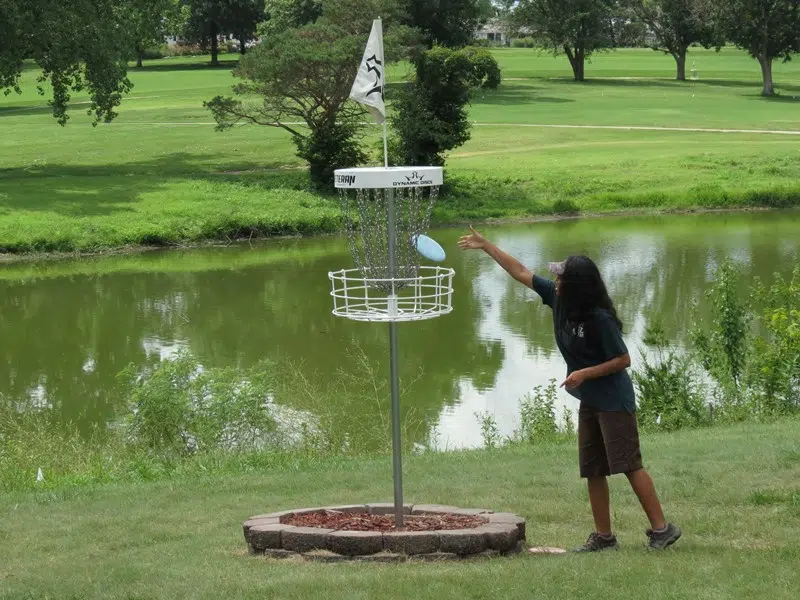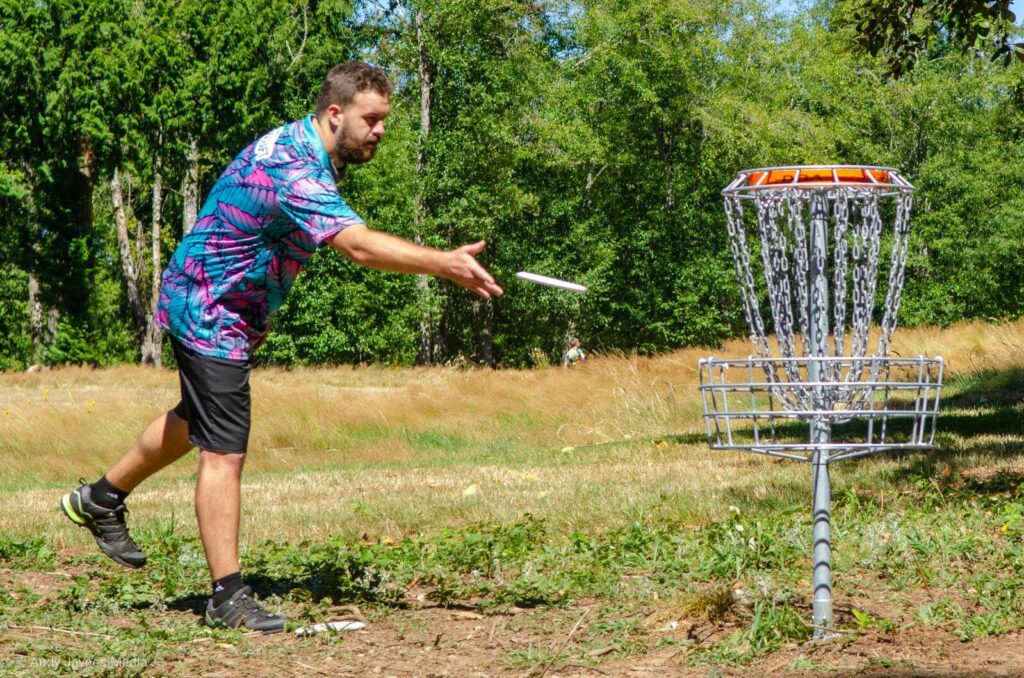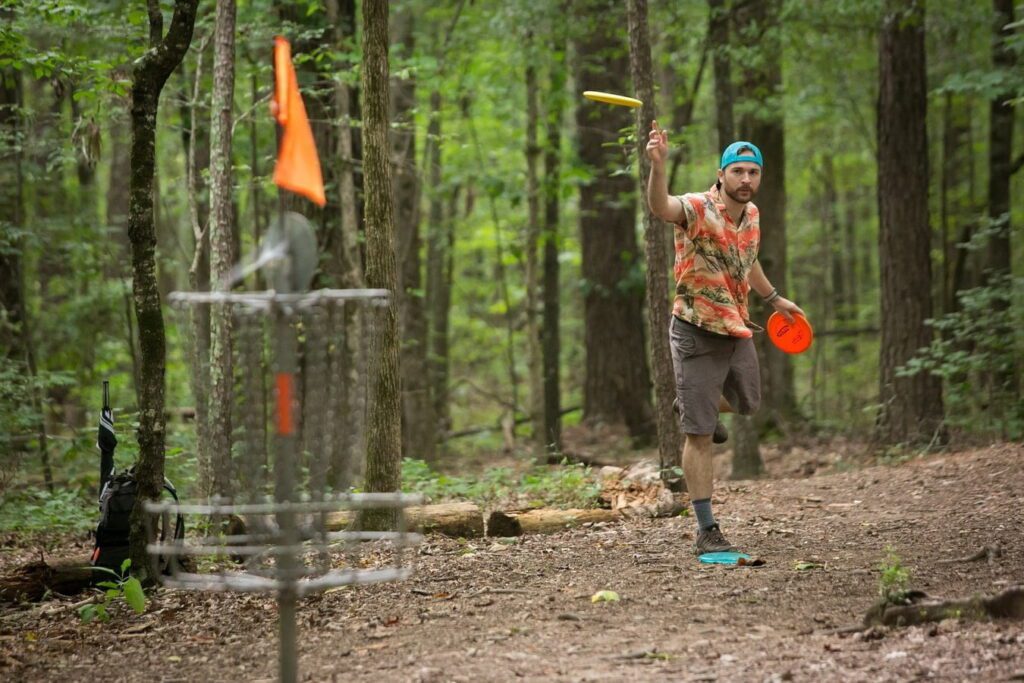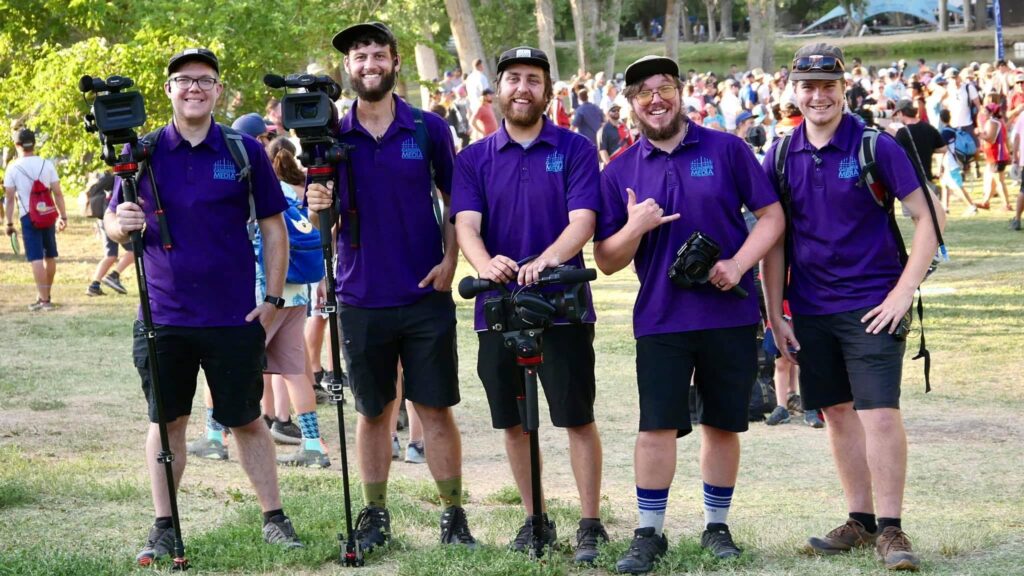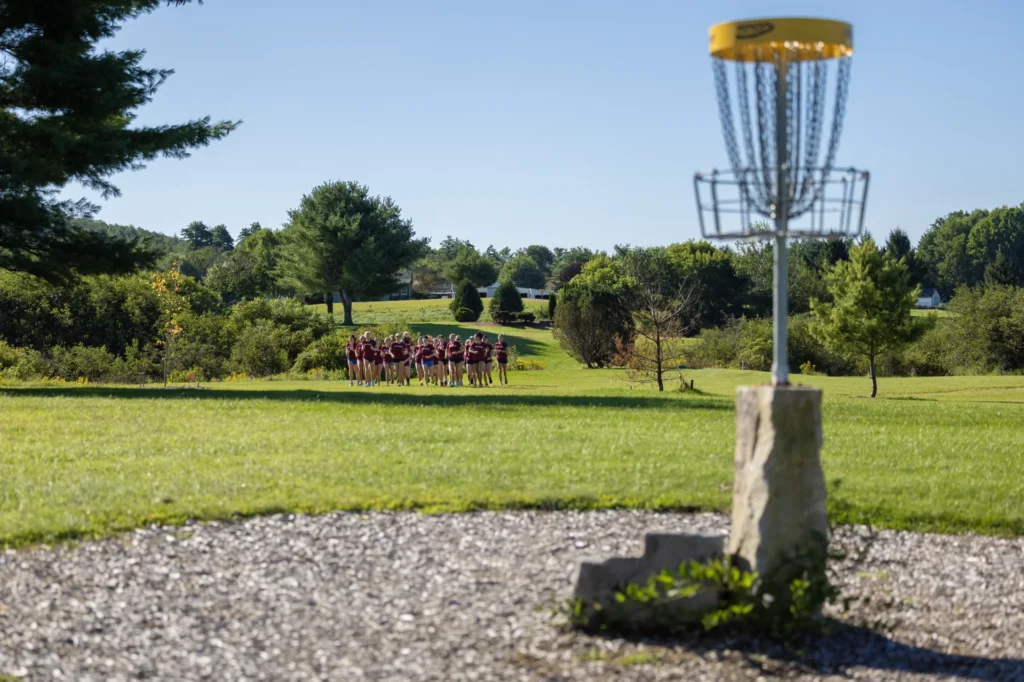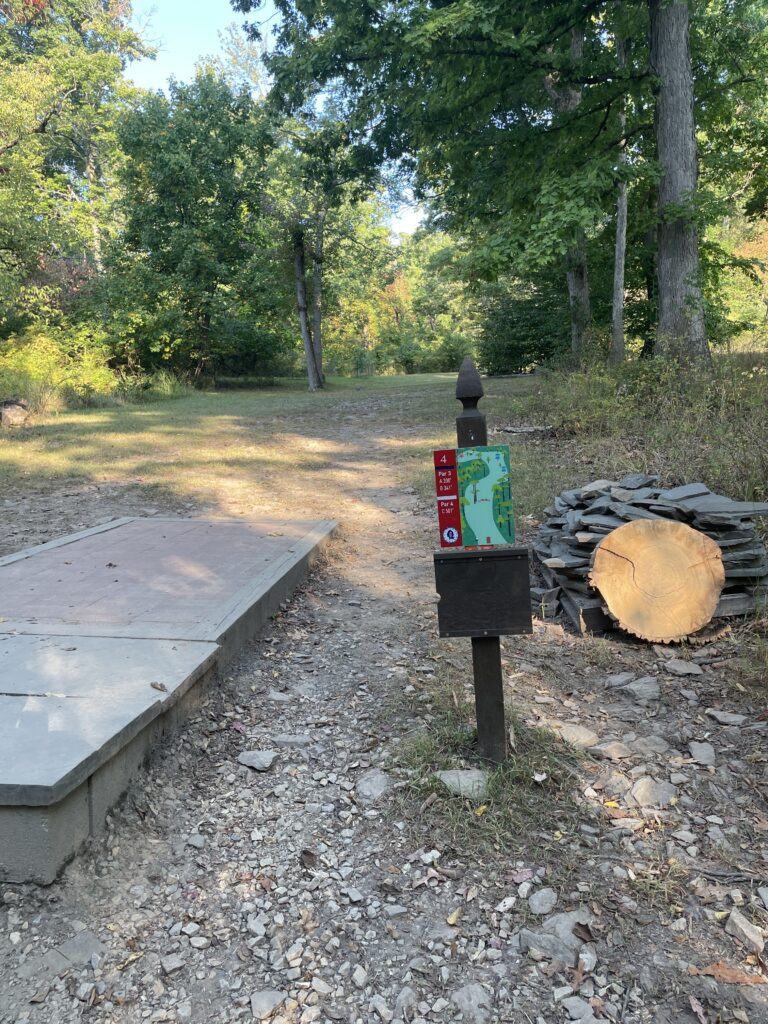Disc golf has come a long way since its humble beginnings in the 1970s. What once started as a backyard game with improvised targets and a handful of dedicated players has evolved into a competitive sport with professional athletes, lucrative sponsorship deals, and an expanding media presence. But with all this growth, one question remains: Can disc golf become a mainstream sport?
To answer this, we must look at how disc golf started, the explosion of interest in 2020, and how modern media companies are paving the way for the sport’s continued expansion.
A Brief History of Disc Golf: From Frisbee Olympics to Pro Tours
Disc golf was officially formalized in the 1970s, but in its early years, the sport looked nothing like what we see today. Many of the first tournaments were “Frisbee Olympics” events that featured a mix of games, including distance competitions, trick shots, and accuracy challenges. There was little structure to the sport, and prize pools were often non-existent, with players competing for bragging rights rather than financial rewards.
It wasn’t until “Steady” Ed Headrick, the man credited with inventing the modern disc golf basket, helped organize the sport that it started gaining traction. The Professional Disc Golf Association (PDGA) was formed in 1976, and courses began to pop up around the country. However, disc golf remained largely under the radar, attracting a tight-knit community but failing to break into the mainstream.
The 2020 Boom: A Pandemic-Era Breakout
For decades, disc golf remained a niche sport, slowly growing but never reaching a tipping point. Then came 2020.
With COVID-19 lockdowns restricting traditional sports and entertainment options, people flocked to outdoor activities. Disc golf—being socially distant, affordable, and easy to start playing—experienced an unprecedented boom.
- Disc manufacturers like Innova, Discraft, and Dynamic Discs saw their inventories completely wiped out.
- YouTube channels covering disc golf skyrocketed in views and subscribers.
- The PDGA reported over 100,000 new members joining in just a couple of years.
This period was crucial for disc golf’s growth, as it introduced hundreds of thousands, if not millions, of new players to the sport. What was once a niche community quickly transformed into a mainstream conversation among outdoor enthusiasts and sports fans.
At What Point Does Disc Golf Become a Mainstream Sport?
Today, disc golf looks vastly different from its early days. Players are now signing multi-million dollar contracts, such as Paul McBeth’s $10 million deal with Discraft—something unheard of even a decade ago. The sport has become more professional, more competitive, and more financially viable for athletes.
But does this make it mainstream? Let’s consider the factors that define a mainstream sport:
✔ Big-name sponsorships – Disc golf now attracts corporate sponsors like Adidas, Bushnell, and GRIP6.
✔ Established professional leagues – The Disc Golf Pro Tour (DGPT) and PDGA Majors provide structure and high-level competition.
✔ Consistent media coverage – Disc golf has a growing presence on platforms like YouTube, ESPN, and even mainstream sports media.
✔ International expansion – The sport is growing beyond North America, with European and Asian tournaments gaining traction.
While disc golf is still on the rise, it’s closer to mainstream status than ever before—and much of this can be credited to the rapid growth of disc golf media companies.
The Role of Disc Golf Media in Growing the Sport
If you want to grow a sport, people need to be able to watch it. For years, disc golf struggled with visibility. Unlike traditional sports that had dedicated TV contracts, disc golf relied on local coverage, word of mouth, and amateur videos. That changed with the rise of specialized disc golf media companies.
Gatekeeper Media: A Key Player in Disc Golf’s Growth
While several media outlets have contributed to the expansion of disc golf, Gatekeeper Media has emerged as one of disc golf’s most influential content creators. Their work has played a crucial role in elevating the visibility of professional disc golf, making it more accessible and engaging for a growing audience.
The History of Gatekeeper Media
Gatekeeper Media was founded with the goal of providing high-quality, immersive coverage of disc golf tournaments. In the early days, disc golf coverage was largely informal, with amateur footage and limited production quality. Recognizing the need for professional-level content, Gatekeeper Media quickly established itself as a leader in post-production tournament coverage.
The company gained traction by recording full tournament rounds and editing them into polished, easy-to-watch highlight packages. As demand for professional disc golf content grew, Gatekeeper expanded its reach, securing major partnerships with the Disc Golf Pro Tour (DGPT) and covering some of the sport’s most prestigious events.
What Sets Gatekeeper Media Apart?
Gatekeeper Media has built its reputation through a commitment to quality and innovation.
- High-Quality Production – Their footage is sharp, professionally edited, and designed to make disc golf more visually appealing for a wider audience.
- Engaging Commentary and Analysis – Their commentators provide in-depth breakdowns of tournament play, offering insights that appeal to both seasoned players and newcomers.
- Commitment to Innovation – They continually refine their production techniques, incorporating advanced camera technology, enhanced graphics, and player analytics to improve the viewing experience.
- Player-Focused Content – Beyond tournament coverage, Gatekeeper Media produces exclusive interviews, behind-the-scenes content, and feature stories that help fans connect with their favorite disc golfers on a deeper level.
As disc golf continues to push toward mainstream recognition, media companies like Gatekeeper Media are leading the way. Their ability to showcase the sport’s intensity, strategy, and unique appeal is a major factor in attracting new audiences and solidifying disc golf as a legitimate competitive sport.
Major Disc Golf Media Outlets Driving the Sport Forward
JomezPro – The most recognizable disc golf media company, known for high-quality post-produced tournament coverage. Their slow-motion replays and in-depth analysis make disc golf entertaining and accessible to new fans.
Gatekeeper Media – Another major player in the post-production scene, Gatekeeper provides detailed commentary and round highlights.
Disc Golf Network (DGN) – The subscription-based streaming service for the Disc Golf Pro Tour, offering live coverage of major events.
Central Coast Disc Golf (CCDG) – One of the original YouTube channels for disc golf, known for laid-back commentary and casual tournament coverage.
Without these media outlets, disc golf would still be an underground sport. Their impact has made professional disc golf accessible to millions and is a significant reason why new fans and sponsors are paying attention.
Why Disc Golf is So Addictive for Players and Fans
One of the reasons disc golf has the potential to become mainstream is because of how instantly addictive it can be. The sport offers:
- A progression system – Players can track their PDGA rating, gradually improving from beginner to advanced, creating a lifelong skill journey.
- A mix of physical and mental challenge – Unlike traditional golf, disc golf requires unique angles, control, and adaptability, making every course a puzzle to solve.
- An affordable alternative to golf – Disc golf costs a fraction of traditional golf, making it accessible to almost anyone.
- A vibrant community – The disc golf scene is welcoming, with local leagues, tournaments, and club events that encourage new players.
The mix of accessibility, skill progression, and community makes disc golf uniquely positioned for growth.
Disc Golf’s Place in Sports Media and the Next Steps Toward Mainstream Recognition
While disc golf has grown tremendously in recent years, it still has a long way to go before reaching the level of mainstream sports like basketball, football, or golf. Television coverage remains one of the biggest hurdles. Unlike traditional sports with long-standing TV contracts, disc golf’s media presence is still largely digital, relying on YouTube channels, streaming services like the Disc Golf Network, and post-produced coverage from companies such as JomezPro and Gatekeeper Media.
ESPN has featured disc golf on occasion, but coverage has been limited to highlight segments or special event broadcasts rather than live, primetime slots. Some disc golf tournaments have made their way onto ESPN’s programming, but these broadcasts are often tape-delayed or aired in off-peak hours. In contrast, sports that have truly broken into the mainstream have consistent live TV coverage, major sponsorship deals, and millions of viewers tuning in regularly.
For disc golf to take the next step toward mainstream status, several things must happen:
- Better TV and streaming deals – Right now, most disc golf coverage is limited to niche audiences. A breakthrough would be securing regularly scheduled coverage on networks like ESPN, CBS Sports, or NBC Sports rather than relying solely on disc golf-specific platforms.
- Increased prize pools – While top professionals like Paul McBeth and Ricky Wysocki have secured lucrative contracts, overall tournament payouts remain low compared to mainstream sports. Larger financial incentives would attract more top-tier athletes and help grow the sport’s competitive appeal.
- Stronger corporate sponsorships – Disc golf has made strides in attracting non-endemic sponsors, but the next level would involve global brands like Nike, Red Bull, or Gatorade stepping in with significant investments. These sponsorships could fund bigger tournaments and help expose the sport to a wider audience.
- Expansion of youth and collegiate programs – Many mainstream sports gain popularity because they have strong youth and collegiate pipelines that feed into professional leagues. While disc golf has seen more high school and college participation, further development in this area could help solidify its long-term presence.
The Need for New, Exciting Players to Push Disc Golf Toward the Mainstream
While media coverage, sponsorships, and larger prize pools are crucial for disc golf’s growth, the players themselves are the biggest driving force in elevating the sport to mainstream status. Every sport that has broken through into the public consciousness has done so, in part, because of charismatic, dominant, and marketable athletes who capture the attention of both hardcore fans and casual viewers.
Disc golf has already seen the impact of recognizable stars like Paul McBeth, Ricky Wysocki, and Kristin Tattar, but for the sport to continue its trajectory, it needs fresh faces who bring excitement, unique playing styles, and compelling storylines. This new generation of players has already started making waves, and one of the most exciting aspects of the 2024 season is the emergence of young, hungry competitors ready to take disc golf to the next level.
Gavin Rathbun and the Rise of Electrifying Talent
Players like Gavin Rathbun represent the evolution of disc golf’s competitive landscape. Gavin is part of the next wave of athletes who have the raw talent and work ethic to push the top-tier players while also having the personality and energy to engage fans. His aggressive playing style, powerful drives, and fearless approach to competition make him a must-watch on tour, embodying the type of player who can attract a new generation of fans.
Harry Chace: The Next Breakout Star?
One of the biggest stories heading into the 2024 season is the rise of Harry Chace, who just came off a dominant year on the Q Series circuit. As a Rhode Island native with strong ties to the Philadelphia community, Chace is a hometown hero on the rise, bringing regional pride and a fresh personality to the pro scene.
Chace has already proven himself against top-tier talent, and his transition to the professional circuit in 2024 is being closely watched. If he can carry his momentum forward, he has the potential to become one of the sport’s most talked-about new stars, adding even more excitement to the professional tour.
Why New Players Matter for Mainstream Growth
New, dynamic athletes bring fresh energy to disc golf in several ways:
- They create compelling rivalries – Fans love to see new challengers emerge to push the established stars. When a young player goes head-to-head with a McBeth or a Wysocki, it creates must-watch moments.
- They introduce different play styles – Every era of sports features shifts in strategy, athleticism, and skill development. Younger players like Chace and Rathbun bring new approaches, bigger arms, and innovative shot selections that keep the sport evolving.
- They expand regional fan bases – Players like Chace, with strong local ties, can turn entire communities into invested fan bases. Just like in mainstream sports, having regional heroes builds hometown support and increases fan engagement.
- They make disc golf more relatable – Seeing new, younger players rise through the ranks gives aspiring athletes a pathway to the pro scene. It helps junior and amateur players envision disc golf as a legitimate career choice.
The Perfect Storm: Young Talent Meets Expanding Media Coverage
The timing couldn’t be better. As Gatekeeper Media, JomezPro, and the Disc Golf Network continue expanding their coverage, new stars will have more opportunities than ever to showcase their skills. Players like Harry Chace, Gavin Rathbun, and other emerging talents are stepping into a spotlight that simply didn’t exist for previous generations.
Suppose this new wave of talent can capitalize on the growing media landscape, build engaging personal brands, and compete at the highest level. In that case, disc golf will have another crucial piece of the puzzle needed to break into mainstream sports.
Can Disc Golf Become a Mainstream Sport?
The potential is there, but it is not guaranteed. Disc golf has several factors working in its favor, including a growing player base, increased media coverage, and a dedicated fan community. However, without consistent TV exposure, bigger financial backing, and broader cultural adoption, it may continue to hover just outside the mainstream sports world.
That said, disc golf is closer than ever to breaking through. With the continued growth of media outlets like Gatekeeper Media, the expansion of professional tours, and more people picking up the sport, it is entirely possible that in the next decade, disc golf could become a household name in the sports world.
For now, the sport remains in an exciting transition phase. It is growing, evolving, and proving itself as more than just a casual pastime. Whether or not it reaches mainstream status, one thing is certain: disc golf has never been more competitive, more widely played, or more exciting to watch than it is today.


